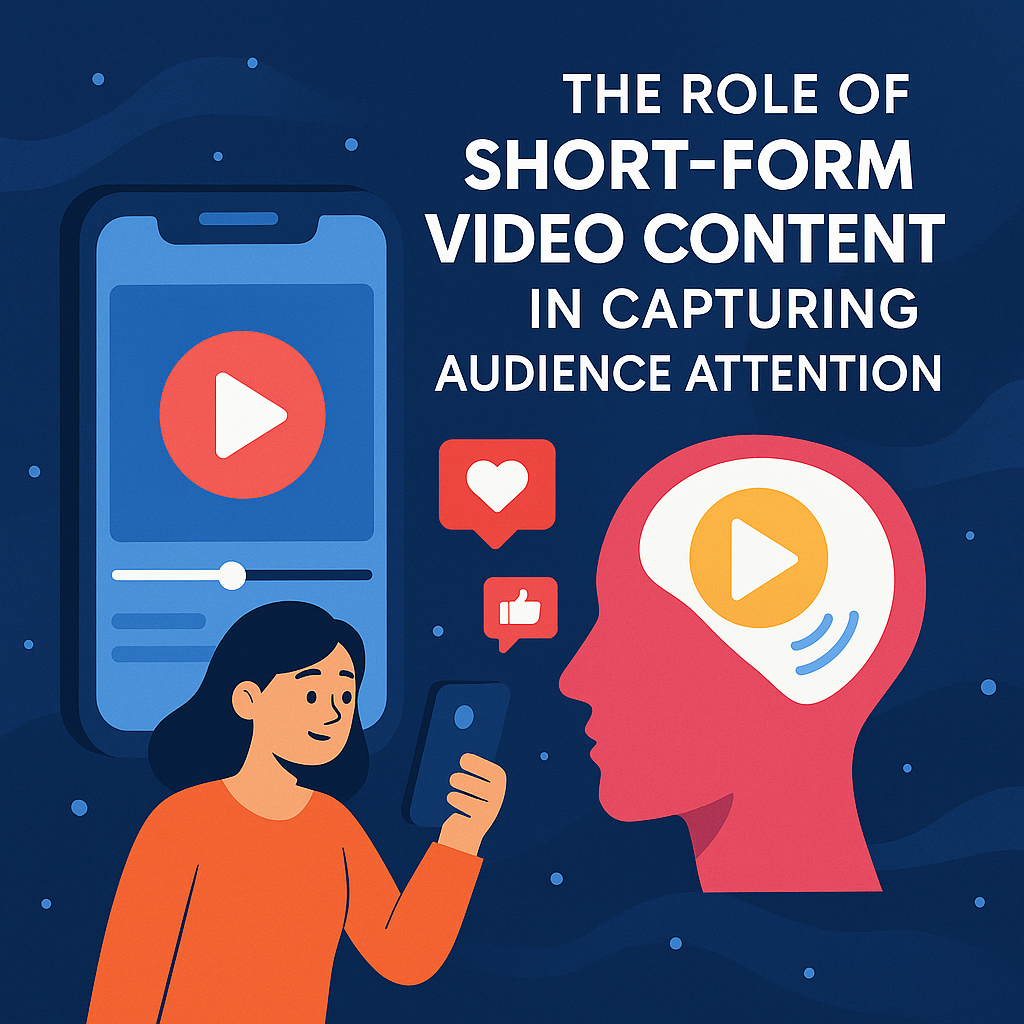5 Scientific Reasons Why Short-Form Video Content Dominates Audience Engagement in 2025

Introduction
In today’s fast-paced digital ecosystem, short-form video content has emerged as a dominant force across platforms like TikTok, Instagram Reels, YouTube Shorts, and Facebook Stories. These bite-sized pieces of content don’t just entertain—they influence buying decisions, brand loyalty, and user behavior.
But what makes these videos so effective? Why are they outperforming traditional long-form formats in terms of reach, retention, and conversion? This article unpacks the scientific, psychological, and strategic reasons behind the rise of short-form videos.
Shrinking Attention Spans and the 3-Second Rule
Research from Microsoft reveals that the average human attention span has shrunk to just 8 seconds, down from 12 seconds in 2000. Short-form videos are engineered for this behavioral shift. They front-load key messaging within the first three seconds—known as the “hook”—making it nearly impossible for users to scroll past without engaging.
In marketing, this is gold: capture fast, deliver impact faster.
Psychological Impact: Multi-Sensory Stimulation
Short videos simultaneously engage visual and auditory senses, which boosts cognitive processing and emotional resonance. This multi-sensory input activates more areas of the brain, particularly the limbic system, which governs emotional response.
Key effects include:
- Faster memory encoding
- Greater emotional association
- Higher likelihood of repeated views and shares
This is why videos with fast cuts, popular music, subtitles, and emotionally driven stories outperform static content or long lectures.
Platform Algorithms Favor Short-Form
Social media platforms are shifting heavily toward video-first strategies. TikTok’s For You page, Instagram’s Explore tab, and YouTube Shorts feeds are algorithmically optimized to promote engaging short videos.
Why? Because:
- They hold attention longer (completion rates are higher)
- They generate more interactions (likes, shares, saves)
- They encourage binge-watching behavior
From a platform’s perspective, this equals more time spent in-app, more ads watched, and more engagement metrics. From a brand’s perspective, this means more reach and visibility.
Ease of Production and Viral Potential
Creating short-form videos doesn’t require a studio setup. A smartphone, decent lighting, and a compelling idea are enough. This democratizes content creation, allowing individual creators and small businesses to compete with big-budget advertisers.
And because the barrier to share is low, short videos can quickly go viral—especially when tied to trending topics, sounds, or hashtags.
Higher Conversion Rates with Less Effort
Short videos drive conversions better than traditional ads. Why?
- They respect the viewer’s time
- They focus on one clear call to action
- They often evoke emotions like surprise, joy, or curiosity
According to Wistia’s 2024 report, videos under 60 seconds showed a 32% higher click-through rate compared to videos longer than 2 minutes. For eCommerce brands, this often translates into direct product sales, sign-ups, and app downloads.
Case Study: Real Results from Real Brands
A lifestyle brand launched 10-second videos showing “before vs. after” transformations using trending soundtracks and fast transitions. In under two weeks:
- +39% increase in product page visits
- +22% higher add-to-cart rate
- +180% spike in social shares
Short-form storytelling delivers impact that’s measurable, repeatable, and scalable.
Pro Tips for Creating Effective Short Videos
- Start with an emotional hook or shocking stat
- Use text overlays for sound-off environments
- Match visual pacing to the platform (e.g., faster cuts for TikTok, aesthetic visuals for Instagram)
- Include a clear CTA like “Buy Now,” “Swipe Up,” or “Follow for More”
- Repurpose across platforms with native formatting
The Science Behind the Scroll
From a neurological standpoint, our brains are wired for novelty. Short videos, often unpredictable and visually stimulating, trigger dopamine surges, reinforcing the behavior of continued viewing. This behavioral feedback loop is what makes people binge-watch Shorts, Reels, and TikToks for hours.
Brands leveraging this model aren’t just getting seen—they’re becoming part of the viewer’s daily cognitive diet.
Conclusion
Short-form video content is more than a trend—it’s a psychological, strategic, and technological shift in how humans consume information. In the landscape of digital communication, if your message can’t fit into 30 seconds, it might not get heard at all.
Those who adapt will thrive. Those who don’t will vanish in the scroll.


